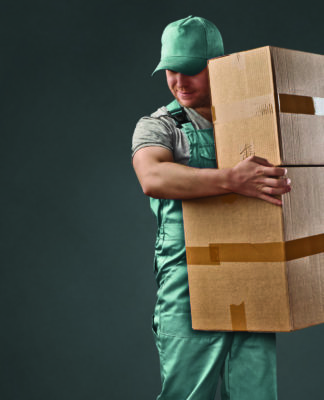Contractors rely on modern tools and technologies to keep their operations moving, and they look to their distributors to keep them up to speed on the latest and greatest products in the market. Here, six electrical con-tractors discuss the features they’re looking for in new products, key prod-uct trends they are witnessing, and what they want from their distribu-tors when it comes to getting new product information:
- Theron DiPietrantonio, director of fabrication, Lighthouse Electric, in Canonsburg, Pa.
- William Mazzetti, senior vice president/innovation, Rosendin, in San Jose, Calif.
- Anthony Ranieri, licensed electrician/superintendent and safety director, H&L Electric, in Long Island City, N.Y.
- Veronica Rose, president/owner, Aurora Electric, in Queens, N.Y.
- Adam Scheffler, president, Premier Electric, in New York, N.Y.
- Hal Sokoloff, president, H&L Electric, in Long Island City, N.Y.
Q: As you evaluate different new products, what key features are you looking for and why?
Scheffler: Labor is very expen-sive and time is money. Safe and ergonomically designed products appeal to us, along with those that reduce labor, such as anything battery operated, even though it might be more expensive. To not have to run an extension cord from a tool to an out-let, for example, saves a lot on labor and prevents a trip hazard.
Sokoloff: The safety of our team is important, so we review the safety records of all of the products we
use and avoid any equipment that could cause harm to our electricians. Because we also need to remain competitive—we’re here to make a living, secure jobs, and provide a fair wage to our employees—we look for products that will make our staff more productive and efficient. Prod -ucts like electric hammers and lasers have come a long way. These tools and technologies allow us to offer a better product at more reasonable pricing and secure repeat business.
Mazzetti: We don’t look for a
“product” per se, but rather a solu-tion. The solutions we’re seeking and developing ourselves really address the next level in functionality and benefit, where that benefit addresses multiple needs and solves multiple problems at the same time.
Rose: I look for anything that makes our work easier and increases productivity, safety, and efficiency. Our workers are our most valuable asset, as they generate the revenue required to be successful and com- petitive, so the less wear and tear
on their mind and body, the longer they’re able to be valuable and pro-ductive team members. Ultimately, the happier our team members are, the more profitable we are.
DiPietrantonio: We look for anything that removes a standard step: Preassembly or a product that takes two parts and makes them one will take a step out of the field or out of our prefab workflow. Safety is another key consideration: We look at things like sharp edges on products. We also look at how products are packaged—for example, whether we can purchase products in larger case quantities to reduce ordering as well as packaging that involves less card-board so that there’s less waste and recycling required.
Q: What interesting and/or
specific new products or product trends are you seeing today?
Scheffler: Among other trends, the evolution to LED lighting over the past 10 to 15 years has made dimming easier, and we’re seeing more and more jobs and energy codes calling for lighting controls and dimming capabilities. In response, luminaire wire is increasingly becoming a com-bination of high and low-voltage cable to support dimming and lighting control capabilities. This enables us to run one wire instead of two, which helps us reduce labor.
Ranieri: Among other interesting new products, one manufacturer makes a pulling machine that’s lighter, more efficient, easier to set up, and safer than other products, which is an important consideration when we’re pulling hundreds of pounds of torque that could hurt somebody. When it comes to pulling long lengths of large-size wire on huge reels, this is a great innovation that now enables one per-son to maneuver a reel that used to require four people. In addition, everything is becoming battery operated, and there is a great rechargeable battery (fuel cell) on the market that’s interchangeable with many different pieces of equipment.
Mazzetti: We’re thrilled to see two vital improvements/trends that require constant vigilance happening in our industry—jobsite safety and mental health/wellness support. Everything we do starts and ends with the well-being of our craftspeople—they’re the last-mile implementer of the build. We focus on safety, inventive tooling, systems, robotics, installation techniques, quantity surveying, and project controls that make their life easier, and we’re happy to say that we’re seeing all of these are trends in the industry. We also see an increased openness on the part of channel members to be of assistance; often all we have to do is ask for specific help or insight from our suppliers, partners, and employees and then fund and support it adequately.
Rose: Among other products, we’re enjoying the new testing equipment that’s available. It used to be complicated and expensive and required a certified electrician to use it, but costs are coming down and products have become more user-friendly and intuitive and no longer require the time or costs associated with a more senior-level worker. Since every job needs a special piece of test equipment and they can be expensive, we’ve moved to leasing everything instead of buying it.
When it comes to small power tools, we look for products that are more ergonomic/comfortable to use, meet the power levels we need on the jobsite, and where it feels like electricians were truly part of the company’s new product development process. In terms of trends, we’re definitely seeing product consolidation in the sense that tasks that used to require three tools to complete can now be completed with one. For example, you once needed a screw gun, a drill, and a hammer drill if you were going into concrete, but now one drill does all of those things. Also, you had to put a flashlight on a hard hat, but now lights come standard right on the tools themselves.
We’d still like to see a standard way of getting Wi-Fi on a jobsite; it would be great to get an antenna there be -fore we start site work so that we don’t have to use our phone hotspots or find another way around it.
DiPietrantonio: Many proactive manufacturers are increasingly baking safety considerations into their designs, such as snap-to-stud brackets and center line marks placed on parts and pieces.
We’re also seeing more standardized options for attaching devices
or junction boxes to studs, which reduces our SKU count and offers easier installation compared with previous methods. Conduit manufacturers are beginning to incorporate attachment methods (e.g., compression or speed coupling or set screws) right to the conduit, and we’re also seeing innovative new approaches
to hardware attachments (such as updated spring or rod coupling methods), which involve fewer parts and pieces for us and are more flexible than traditional hardware.
Q: How do your distributors share information on new products with you, and do you find this to be effective? What do you want from them when it comes to getting information about new products?
Scheffler: We use a handful of different distributors for basic material, and some do make the rounds to visit us and share information on new products, but more often our guys learn about new products from other electricians in the field or from talking to distributor counter guys and then placing their own orders with them.
Our distributors know the purchasing people and contractors at our firm who place orders, so it would be beneficial for them to reach out to us in a more formal way to tell us about new products. I get random emails from some distributors notifying me of new products, and I think that’s exactly what distributors should be doing. The subject line should be “new prod-uct alert” and the pictures should be big, colorful, and descriptive. That kind of email will inform me about some new technology that I’ll most likely share with my people.
Sokoloff: Although we buy from a lot of different distributors, one of the key ways we learn about new products is through trade shows, where manufacturers and local distributors dis-play all of the new equipment, tools, and components available.
Another way our electricians learn about new products is by going on-line and/or reading trade magazines, but not every electrician of ours gets those publications. Some distributors come and speak to members of our team to show new products—we’re very loyal and tend to purchase from those who can help us win jobs, handle our emergency work 24/7, and offer competitive pricing—but they don’t visit us on a regular basis.
When it comes to getting information about new products, a newsletter or email blast every one or two weeks describing a new product and maybe attaching a YouTube demo could be helpful; we’d review their recommendations and send it to the right people in our company. Something simple that we could look at for five minutes and send around to our team would be great.
Mazzetti: At Rosendin, strong innovation happens at the manufacturer or key partner level based on our ask. That said, however, our distributors and other external partners bring us everything from new ideas and iterative gains on products to collaboration with their research teams on new products and systems that we end up co-developing, so we appreciate their involvement.
Rose: We use seven to 12 different distributors, and the ones who really help us are the old-school types who send salespeople out to share new product information and maybe offer to do a demo at our jobsite along with the manufacturer—that’s how they’re nailing it for us. In addition, our field people are great and pro-cure the right products by looking through trade magazines and talking to their colleagues.
We wish that manufacturers and distributors would invest more time and money into the actual field people who will be their frontline cheerlead-ers by sponsoring electricians’ base-ball teams, attending unions’ social clubs, or going out to our jobsite at the end of a project and sponsoring a pizza party and a tool demo; I just think that by going direct to the people who use these tools (rather than people at the executive level), they’ll get their product out in the field a lot faster and enjoy a huge return on their investment.
DiPietrantonio: Our distributors are very proactive, and we have an open policy with them: As soon as a new product comes out, I have early samples of it delivered to me, and distributors and manufacturer reps are here to show me how it works and explain its benefits.
It’s not only about sending documentation through emails or LinkedIn, but also about bringing products and letting us try them in our prefab shop. Everything is about time and efficiency: The earlier we can get our hands on a new product, the earlier we can get it approved for use on a project. Good channel part-ners are willing to do the homework to get the new product specified on the next project and avoid us having to apply for a “substitution.”
As it relates to new products, we’d appreciate distributors preparing a case study for us that shows price, availability, time savings, and how the new product compares with the traditional method; that information is very valuable to someone making product decisions. We could even be part of the test pilot for new products; manufacturers are the first line for this, but they also have good distributors they rely on to pull in their con-tractors and help collect data.


